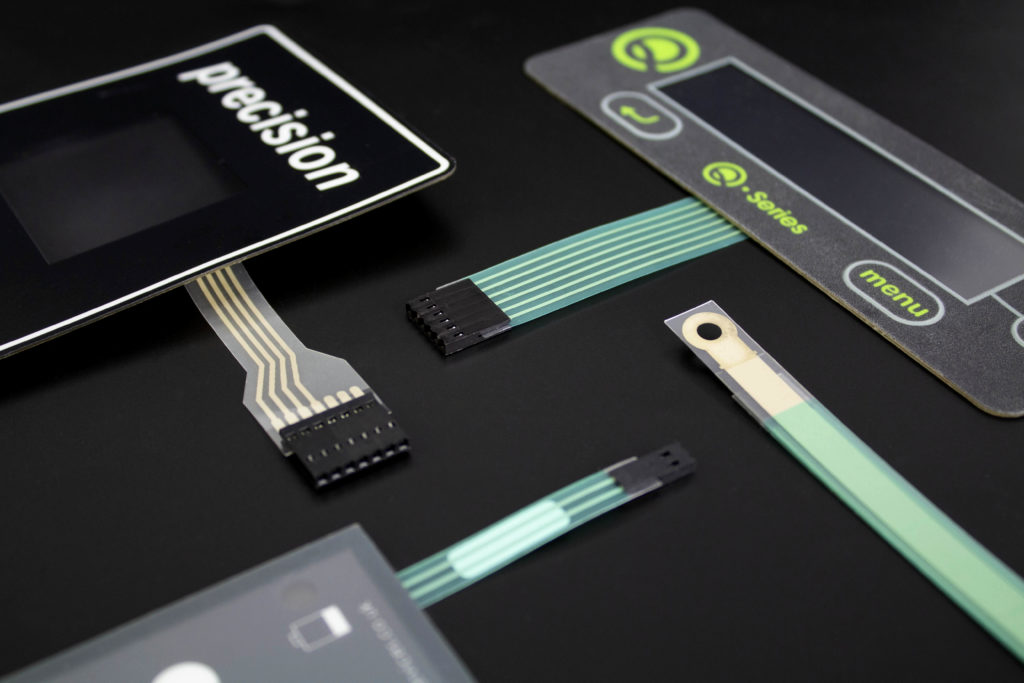Discover Just How Membrane Switches Feature and Their Function in Modern Electronics
Membrane Switches represent an advanced integration of innovation and layout within the realm of contemporary electronic devices, serving as necessary interfaces in many devices. Comprehending the details of Membrane switch capability and their broader ramifications in boosting user experience invites additional expedition into their style, benefits, and the cutting-edge developments shaping their future in modern technology.
What Are Membrane Buttons?

Membrane switches are distinguished by their sturdiness and resistance to ecological variables, such as dirt, dampness, and severe temperature levels. They can be customized with various graphics, colors, and tactile feedback options, enhancing individual experience while preserving aesthetic charm - membrane switches. Moreover, the consolidation of published circuits enables seamless combination into devices, improving overall functionality.
The convenience of Membrane switches appears in their ability to support both simple and intricate control functions. They can incorporate features such as LED signs and touch-sensitive technology, satisfying details user needs. As innovation continues to develop, Membrane Switches remain essential for enabling efficient and intuitive user interfaces, therefore playing an essential role in the innovation of contemporary electronic gadgets.
Components of Membrane Switches
Membrane switches are made up of numerous key parts that interact to produce a functional and trusted user interface. The primary aspects include the graphic overlay, glue layer, spacer layer, and conductive traces.
The graphic overlay works as the interface, commonly printed on an adaptable substrate such as polyester or polycarbonate. This layer not just provides aesthetic allure but additionally includes tactile responses, visual hints, and safety features. Underneath the graphic overlay lies the glue layer, which secures the switch to the tool and ensures longevity against environmental stress and anxieties.
The spacer layer is crucial for keeping the required void in between the graphic overlay and the circuit layer. When stress is used, this space allows for the activation of the button. The conductive traces, usually made from silver or carbon, develop the electric paths that finish the circuit when the button is engaged.
Additionally, a backing layer might be consisted of for architectural assistance and insulation. These components work together effortlessly, ensuring that Membrane switches are both resistant and straightforward, making them essential in different modern-day digital applications.
Just How Membrane Switches Work
Just how do Membrane Switches feature properly within electronic gadgets? Membrane Switches run on the principles of pressure-sensitive technology, using a layered construction that consists of visuals overlays, adhesive layers, and conductive components.
The style of Membrane buttons is essential for their effective procedure (membrane switches). The layers are website here meticulously crafted to offer responsive comments, resilience, and resistance to ecological elements such as dampness and dust. The inclusion of domes-- little, raised areas within the button-- improves responsive reaction, giving users with an obvious click sensation upon activation
In addition, Membrane switches can be tailored in terms of dimension, form, and graphics, making them suitable for numerous applications. They are frequently utilized in control panels, clinical devices, and customer electronic devices due to their smooth layout and reliability. Generally, the efficient functioning of Membrane buttons is pivotal in improving user interaction and making sure smooth operation in contemporary digital tools.

Applications in Modern Instruments
Utilizing their distinct style and performance, Membrane buttons have actually come to be indispensable parts in a wide variety of contemporary digital tools. These functional interfaces are employed in consumer electronics, industrial equipment, medical devices, and automobile click this link controls, offering seamless user interaction.
In consumer electronics, Membrane buttons are generally located in devices like microwaves, cleaning equipments, and various other family gadgets, where they allow user-friendly control with a smooth profile. Their low-profile design helps with combination into compact devices, boosting aesthetic appeal without compromising capability.
In commercial applications, Membrane Switches work as control board for machinery, providing resilience and resistance to severe environments. Their capacity to stand up to wetness and contaminants makes them ideal for usage in production and processing sectors.
Clinical devices additionally gain from Membrane buttons, which are developed to be easy to tidy and preserve, ensuring health in medical setups. They are commonly used in diagnostic devices, client surveillance systems, and portable clinical gadgets, where reliability is extremely important.
Advantages of Membrane Switches
Among the vital advantages of Membrane switches is their versatility, page which permits them to be tailored for a selection of applications across numerous industries. These buttons can be developed in numerous shapes and dimensions, fitting one-of-a-kind product needs while offering smooth integration right into devices. Their thin account enables a streamlined and compact design, usually enhancing the visual appeal of electronic items.
Another considerable benefit is their resilience - membrane switches. Membrane buttons are usually immune to dust, wetness, and chemicals, making them excellent for harsh atmospheres. This strength extends their life expectancy contrasted to typical mechanical switches, decreasing the demand for constant replacements
Additionally, Membrane Switches deal cost-effectiveness. The production procedure involves printing innovations that lessen manufacturing prices, particularly for large runs. This affordability, integrated with reduced upkeep needs, makes them an eye-catching alternative for manufacturers.

Verdict
In final thought, Membrane Switches represent a substantial development in user interface modern technology within contemporary electronics. As the need for durable and instinctive user interfaces proceeds to grow, the role of Membrane switches in forming individual experience will most certainly broaden.
Membrane Switches stand for a sophisticated assimilation of innovation and style within the world of modern electronics, offering as necessary user interfaces in various tools.In the realm of modern electronics, Membrane Switches serve as important elements that assist in customer communication with devices. As innovation proceeds to progress, Membrane Switches remain important for making it possible for efficient and instinctive user interfaces, consequently playing a crucial role in the improvement of contemporary digital devices.
Exactly how do Membrane Switches function effectively within electronic devices? On the whole, the effective functioning of Membrane buttons is crucial in enhancing customer interaction and guaranteeing smooth operation in modern digital tools.